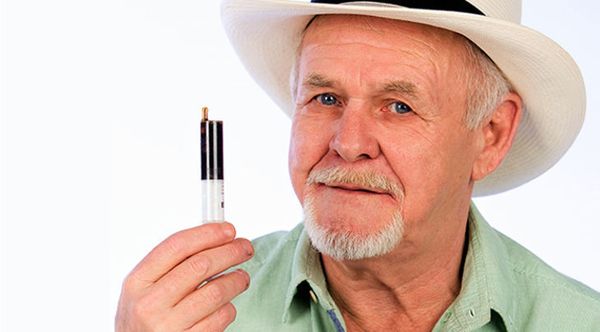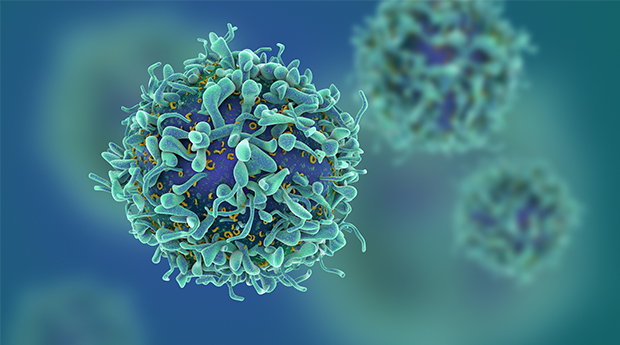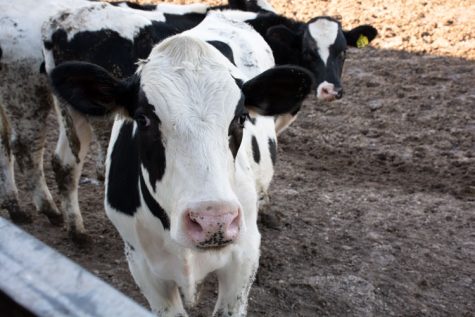Cannabis for cancer: How does cannabis oil work to treat cancer?
Study says “cannabinoids induce tumour cell death and inhibit tumour angiogenesis and invasion in animal models of cancer.”
The topic of using cannabis to treat cancer has been hitting the headlines quite a lot recently. In fact, many people have claimed that the plant’s non-psychoactive compound CBD (cannabidiol) has been successfully used to kill cancerous cells; something that has been confirmed by the National Cancer Institute (NCI).
Rick Simpson is one example. Back in 2003, the skin cancer survivor used CBD oil to treat basal cell carcinoma with staggering results. Since this time, he has had the all-clear and has even developed his own brand of CBD oil for cancer: Rick Simpson Oil (RSO).
The plant’s psychoactive compound THC (tetrahydrocannabinol) on the other hand may aid patients in dealing with chronic pain, insomnia, lack of appetite and nausea during chemotherapy sessions. Don’t just take our word for it. Let the science speak for itself and discover how you can use cannabis oil for cancer.
What is cannabis oil and how is it made?

Cannabis oil is a thick substance that is extracted from the plant, usually using a solvent. The oil is crammed with cannabinoids, which are the plant’s active chemicals.
While some are psychoactive, like THC (tetrahydrocannabinol), others are non-psychoactive, such as CBD (cannabidiol).
Many cannabinoids boast medicinal effects and when they work synergistically, the effects are enhanced. Cannabis oil can be applied topically, consumed orally, smoked, vaped or baked into recipes.
How do cancer cells form in the first place?
Cells in the human body are controlled by oncogenes. These unique genes can make cells multiply, divide and create new tissue. A different type of gene, known as the tumor suppressor gene, is what causes cells to die. Cancer occurs when oncogenes are activated and tumor suppressor genes are deactivated. The cells will go through the hyperplasia stage and the dysplasia stage before a primary tumor emerges, consequently invading the surrounding cells. The final stage, metastasis, is when the cancer cells spread into lymph nodes or blood vessels, before repeating the cell-dividing process.
How does cannabis help kill cancer cells?
:max_bytes(150000):strip_icc()/fibrosarcoma_cells-56a09b433df78cafdaa32efb.jpg) When a cancer patient is administered with cannabis rich in THC, the CB1 or CB2 receptor located on the cancer cell will be alerted. Once this happens, a rise in ceramide synthesis will occur.
When a cancer patient is administered with cannabis rich in THC, the CB1 or CB2 receptor located on the cancer cell will be alerted. Once this happens, a rise in ceramide synthesis will occur.
In simple terms, ceramide synthesis escalates the rate at which a cell dies. Since healthy cells cannot create ceramide when THC is present, these cells are not affected by the admission of cannabis.
Within the nucleus of the cells are hundreds (even thousands) of something called mitochondria. As the ceramide builds up, the Sphingolipid Rheostat is pushed into high gear, which effectively forces cytochrome c (an important protein in energy synthesis) out of the mitochondria, zapping the cell’s energy source.
Further research is needed on using cannabis to treat cancer
Cancer patients around the world are using cannabis to treat cancer, with incredible outcomes. However, more evidence is needed to prove how cannabinoids like THC and CBD may destroy cancer cells and relieve symptoms like chronic pain and nausea.
One study on the anticancer mechanisms of cannabinoids revealed how “cannabinoids induce tumor cell death and inhibit tumor angiogenesis and invasion in animal models of cancer.” At the current time, however, no ongoing clinical trials of cannabis as a cancer treatment are being conducted on humans.
Nonetheless, considering the anti-tumor effects of cannabis compounds, there is a good chance the FDA may approve it as a treatment sometime in the future.








